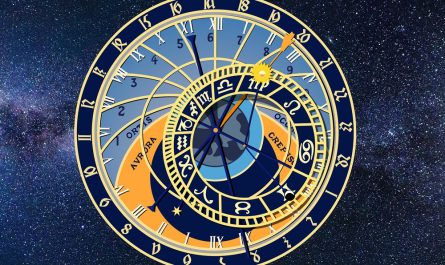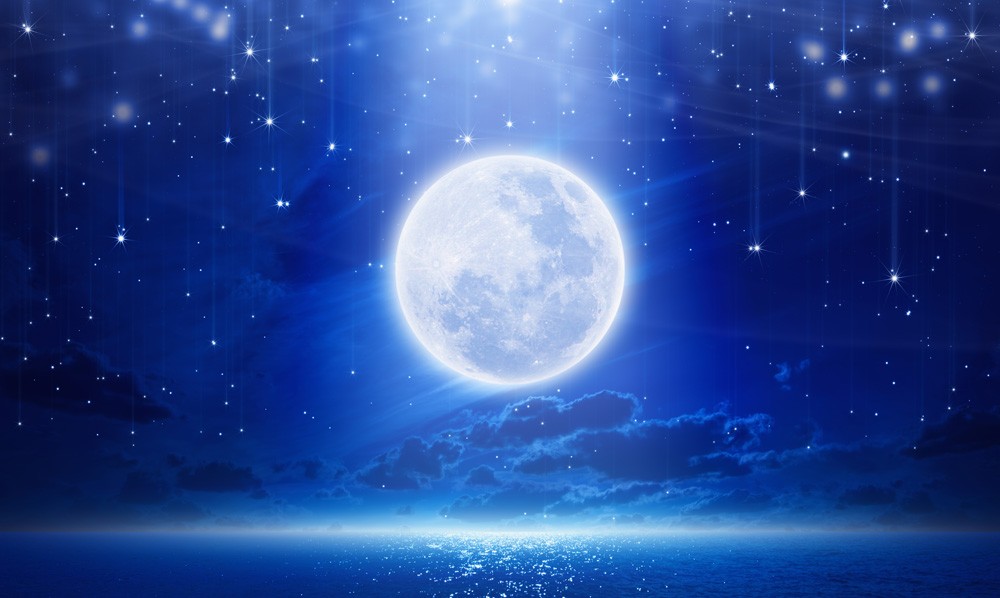Last Updated on February 12, 2025 by Avia
I heart exploring the intriguing signs and symbols nature presents, and the full moons of each month are always the most captivating stories for me. So, it didn’t take much to inspire me to write about the symbolism and meaning of February full moon names. Why? Because these names are steeped in the cultural, spiritual, and environmental practices of ancient peoples, reflecting their intimate connection with the rhythms of nature. If that sounds as interesting to you as it does to me, I’d be delighted if you follow along while I roll out this comprehensive guide to the full moon Names of February and their meanings. Ready to rock? Let’s roll…
Table of Contents
Why Full Moons Are Named Each Month
In the world of our ancestors, where every chirp and chill had meaning, the full moon’s glow was their calendar and guide. For those tending the land, each full moon’s name was a cue, choreographing the dance of their year. Take the “Harvest Moon,” for instance—it wasn’t just a pretty name (or a cool Neil Young song) but a crucial signal. It held gravitas for farmers – it was time to gather the crops, hustling before the autumn air turned too crisp, ensuring that the hard work of spring and summer didn’t go to waste.
Hunters must also get a mental nod of recognition for the meaning of full moon names. For them, the full moon names were more than folklore; they were a matter of survival. These moons point out the best nights to hunt, when the moonlight is bright enough to track prey essential for enduring the long winter months. In hunting terms, moon names were spiritual – the names reinforced the importance of hunting, and each full moon was a chapter in their ongoing story with nature, a rhythm so deeply ingrained that it shaped both their lives and their beliefs.
Names and Meanings of February Full Moons
Right, now that we’ve covered some basics, I hope you’re as excited as I am to wax on about the meaning of February full moon names. I’ll spare you the suspense and rocket-launch right in…(get comfy, b/c I got a bunch of full moon names to share!).
North American February Full Moon Name Meanings
North American February full moon names reveal the intimate connection between Native American tribes and the seasonal shifts of their natural environment. These names mark the passage of time and embody the spiritual and practical life lessons taught by the winter landscape.
Bald Eagle Moon & Eagle Moon
- Origin: Celebrated by Native American tribes such as the Algonquin and Haida, this moon is named for the prominent sightings of bald eagles during this period.
- Symbolism: The bald eagle, a symbol of strength, power, and sovereignty, represents the resilience needed to endure the latter part of winter.
- Cultural Significance: The eagle is often seen as a spiritual messenger or a conduit to the divine in many Native cultures, making this moon a time for spiritual renewal and meditative reflection on personal power and independence.
Bare Spots on the Ground Moon
- Origin: This name is used by the Anishinaabe tribes of the Great Lakes region, referring to the visible patches of earth that appear as the snow begins to melt.
- Symbolism: Symbolizes the transition from winter to spring, indicating that the harsh conditions are yielding to warmer days.
- Cultural Significance: Acts as a signal to the community that the time of renewal is near, inspiring optimism and preparation for the season of growth and rebirth. This moon reminds the people to be resilient, as the signs of spring bring hope for new beginnings and opportunities.
Black Bear Moon
- Origin: Named by tribes like the Cree and Ojibwe, this title marks the time when black bears, a key totem animal, are spotted more frequently as they end their hibernation.
- Symbolism: It signifies renewal and awakening, mirroring nature’s shift from slumber to the slow awakening of spring.
- Cultural Significance: This moon is a reminder of the cycles of rest and activity, encouraging communities to prepare for the reawakening of the land and the busy seasons ahead.
Bony Moon
- Origin: Named by the Cherokee tribe, this title reflects the lean period when food resources were traditionally at their lowest.
- Symbolism: Represents the harshness of the end of winter and the resilience required to endure until the renewing season of spring.
- Cultural Significance: The Bony Moon is a time for conservation and careful planning within the Cherokee community, emphasizing the virtues of moderation and the vital importance of managing scarce resources during difficult times.
Deep Snow Moon
- Origin: The Mohican tribe named this moon for the deep snows that often covered their lands during this month.
- Symbolism: Represents endurance and the challenge of moving through the physical and metaphorical depths of winter.
- Cultural Significance: A reminder of the strength and perseverance required to overcome challenges, serving as a metaphor for the struggles one might face in life.
First Flower Moon
- Origin: Named by the Catawba and related Southeastern tribes, this moon marks the appearance of the season’s first blooms.
- Symbolism: Signals rebirth and rejuvenation, as the first flowers begin to emerge despite the lingering chill.
- Cultural Significance: Often associated with fertility and growth, this moon is a time to celebrate new life and beginnings, both in nature and within the community.
Goose Moon
- Origin: Observed by tribes in both North America and Northern Europe, this moon correlates with the return of geese from their winter migrations.
- Symbolism: Acts as a herald of change, signaling the impending arrival of spring and the renewal of the water and land.
- Cultural Significance: Represents the connectedness of migratory patterns in life, reminding us of the cyclical and global nature of existence and encouraging celebrations of renewal and community gathering.
Groundhog Moon
- Origin: Credited to tribes like the Delaware and Cree, who observed the behavior of groundhogs, or woodchucks, as they emerged from hibernation during this period.
- Symbolism: Symbolizes awakening and the first signs of spring. The groundhog’s emergence is a natural indicator of the transition from winter to spring.
- Cultural Significance: This moon holds a special place in the cultural narratives of these tribes, emphasizing the connection between human communities and animal behaviors. It reminds people of the wisdom of observing and learning from nature as a guide for adapting to new cycles.
Ice Moon
- Origin: Aptly named by the Cree Nation, this moon describes the icy landscape of Canada during February, reflecting the severe winter conditions.
- Symbolism: Symbolizes the resilience and enduring spirit required to thrive in the face of Canada’s harsh winters.
- Cultural Significance: This moon highlights the Canadian ethos of toughness and community support, reminding people of the strength found in unity and mutual aid during the coldest months.
Little Sister of the Waning Moon
- Origin: This poetic name is given by the Tunica-Biloxi Tribe of Louisiana, reflecting their observation of the moon’s diminishing phases as winter begins to recede.
- Symbolism: Symbolizes the gradual decrease in the harshness of winter and the subtle shifts toward the renewing energy of spring.
- Cultural Significance: For the Tunica-Biloxi, this moon encourages a time of patience and inner nurturing, preparing the community to emerge from winter’s shadow with renewed strength and vitality.
Makes Branches Fall In Pieces Moon
- Origin: Used by the Abenaki tribe of Maine, this name for February’s full moon vividly describes the heavy snowfall that often accumulates on tree branches to the point where they break and fall.
- Symbolism: Represents the harshness of late winter when snow and ice can cause destruction in the natural world.
- Cultural Significance: Reflects the Abenaki’s deep connection with nature and their awareness of the cycles that influence their environment and survival. This name underscores the challenges of winter while reminding the community of the resilience needed to endure until spring.
Midwinter Moon
- Origin: Recognized by the Oneida and other Iroquois nations, this moon marks the mid-point of the cold season.
- Symbolism: Symbolizes survival and the resilience necessary to make it through to the end of winter.
- Cultural Significance: This is a time for communal support and collective strength, encouraging the sharing of resources and warmth in the coldest part of the year.
Raccoon Moon
- Origin: Named by tribes such as the Shawnee and Powhatan, the “Raccoon Moon” reflects the increased activity of raccoons during this time. These tribes noted the raccoons’ emerging from their winter dens to forage before the deep cold of winter fully subsides.
- Symbolism: Represents adaptability and resourcefulness, qualities embodied by the raccoon as it navigates the tail end of winter in search of food.
- Cultural Significance: For these Native American communities, the Raccoon Moon serves as a reminder of the importance of cleverness and preparation. It inspires a readiness to adapt to changing conditions, essential for survival and prosperity.
Sucker Fish Moon
- Origin: The Ojibwe people of the Great Lakes region call the February full moon Namebini Giizis, meaning “Sucker Fish Moon.” The name comes from the spawning season of the sucker fish, known as Namebin, which begins to appear in the rivers around this time.
- Symbolism: Represents the renewal of aquatic life and the natural rhythms of the rivers, marking a crucial transition toward the abundance of spring.
- Cultural Significance: For the Ojibwe, this moon is a reminder of their deep connection to the waterways and the seasonal migrations of fish that sustain their communities. It emphasizes the importance of respecting natural cycles, practicing sustainable fishing, and preparing for the changes that come with the approaching thaw.
When the Bear Cubs Are Born Moon
- Origin: Directly tied to the natural event of bear cubs’ births, closely observed by Great Lakes tribes.
- Symbolism: Represents new beginnings and the purity of life, echoing the innocence and potential of early life.
- Cultural Significance: This moon encourages reflection on growth and the nurturing of new projects or ideas, as the community prepares for the reawakening of the earth.
European February Full Moon Name Meanings
Moon monikers for February that originate in old European traditions convey vivid symbolism to reveal the storied relationship between the continent’s varied cultures and the dramatic winter landscapes they inhabit. Check ‘em out…
Disinherited Moon Month
- Origin: Also stemming from Old German traditions, this name describes the midwinter hardships when resources are scarce and the landscape is barren.
- Symbolism: Symbolizes the challenges and hardships that must be endured, akin to being ‘disinherited’ from the bounty of nature.
- Cultural Significance: Emphasizes the resilience required to survive the toughest part of the year. It encourages perseverance and preparation, teaching the importance of sustaining through difficult times to experience the renewal that follows.
Horn Moon
- Origin: An Old German name, the “Horn Moon” refers to the period when deer shed their antlers, which typically occurs during this time of year.
- Symbolism: Represents renewal and the natural cycle of shedding the old to make way for new growth.
- Cultural Significance: This name highlights the acceptance of natural cycles in life, including loss as a necessary precursor to renewal. It serves as a reminder of the inevitability of change and growth through the natural order.
Mud Month Moon
- Origin: Reflects the thawing of the ground and the resulting muddy conditions in Old English regions.
- Symbolism: Symbolizes transition, renewal, and the often messy process of transformation.
- Cultural Significance: Encourages resilience and adaptability, reminding us that periods of mess and muddle often precede growth and renewal.
Snow Moon
- Origin: The “Snow Moon” is another name rooted in Celtic and Old English traditions, aptly describing the snowy landscapes typical of February.
- Symbolism: Evokes the blanket of snow that covers the earth, symbolizing purity and the quiet beauty of winter’s grip.
- Cultural Significance: This moon highlights the insulating and protective qualities of snow, which sustains the dormant life beneath it until spring. It reminds us of the importance of rest and renewal, encouraging a period of introspection and conservation of energy in preparation for the revitalization of spring.
Storm Moon
- Origin: Derived from Celtic traditions, the “Storm Moon” is named for the turbulent weather that often occurs during February in the Celtic regions.
- Symbolism: Represents the volatile and unpredictable nature of the season, embodying the wild, stormy weather that can dominate the landscape.
- Cultural Significance: This moon serves as a reminder of the power of nature and the need for resilience. It encourages communities to prepare for winter’s challenges, emphasizing the importance of unity and mutual support during times of environmental upheaval.
African February Full Moon Name Meanings
February full moon names in Africa reflect the continent’s diverse climates, wildlife, and seasonal transitions. Rooted in indigenous traditions, these names capture the delicate balance between wet and dry seasons, the survival instincts of local animals, and the deep connection between African communities and the rhythms of nature.
Dassie Moon
- Origin: Named for the rock hyrax (commonly known as dassie in South Africa), which is particularly active during this time.
- Symbolism: Highlights the importance of adaptation and making the most of one’s environment for survival.
- Cultural Significance: Reminds us of the interconnectedness of all creatures and the role each plays in the larger ecosystem.
Drying Moon
- Origin: The Drying Moon in various African regions reflects the season when the landscape transitions from the rainy season to a drier period.
- Symbolism: Signifies the shift from the wet to the dry season, symbolizing adaptation and preparation.
- Cultural Significance: This moon is critical for agricultural planning and the management of water resources, vital for the livelihoods of many communities across the continent.
Asian February Full Moon Name Meanings
February full moon names in Asia are deeply tied to lunar festivals, seasonal changes, and cultural traditions that have been honored for centuries. These names reflect themes of renewal, prosperity, and the transition from winter to spring, marking significant moments in the agricultural and spiritual calendars of various Asian cultures.
Budding Moon
- Origin: This name is inspired by the observation of the first buds appearing on trees, signaling the coming of spring.
- Symbolism: The moon emphasizes growth and the potential for new beginnings, reflecting nature’s cycle of rebirth and the rejuvenation of flora.
- Cultural Significance: In Chinese culture, the Budding Moon is a sign of renewal and optimism, encouraging people to start fresh projects and nurture new ideas as the earth itself reawakens.
Lantern Moon
- Origin: This February moon name refers to the full moon that occurs during the Chinese Lantern Festival, which typically falls in February on the 15th day of the first lunar month. This festival marks the end of the Chinese New Year celebrations and signifies the first full moon of the new lunar year.
- Symbolism: Represents illumination, unity, and new beginnings, as families gather to celebrate the brightness of the first full moon of the year.
- Cultural Significance: The Lantern Moon is a time of joy and togetherness, celebrated with vibrant lantern displays, traditional performances, and symbolic foods such as sweet rice dumplings (tangyuan), which represent family unity and prosperity. It embodies the transition into the new year with hope, wisdom, and renewal.
Plum Moon
- Origin: This lunar name corresponds with the blooming of the plum blossoms across Japan, one of the first signs of spring.
- Symbolism: The Plum Moon represents purity, renewal, and the ephemeral beauty of life, embodying the brief yet striking bloom of plum blossoms that are much celebrated in Japanese culture.
- Cultural Significance: Plum blossoms hold a special place in Japanese aesthetics and philosophy, symbolizing resilience against adversity and the fleeting nature of life, which is often celebrated through plum festivals and artistic expressions during this time.
Australian February Full Moon Name
Australian February full moon names are closely linked to the rhythms of nature, reflecting the seasonal shifts in the Southern Hemisphere. These names often coincide with the harvest season, emphasizing abundance, renewal, and the connection between the land and its people.
Grain Moon
- Origin: This moon corresponds with the grain harvest in the more temperate regions of Australia, marking a critical time in the agricultural calendar. Some reports indicate the Grain Moon might also be used for the month of January, FYI.
- Symbolism: Represents prosperity and sustenance, emphasizing the importance of the grain harvest in supporting communities.
- Cultural Significance: The Grain Moon is a time of celebration and gratitude for the harvest, underscoring the role of agriculture in sustaining and enriching Australian life.
New Zealand February Full Moon Name
In New Zealand, the February full moon holds deep significance in Māori tradition, aligning with the harvest season and the natural cycles of the land. Its name reflects the time of gathering and gratitude, marking an important moment in the Māori lunar calendar.
Crops Harvest Moon
- Origin: The Māori people of New Zealand refer to the lunar month of February as Poutū-te-rangi, meaning “the crops are now harvested.” The full moon during this month falls halfway between the successive new moons, marking a significant point in the lunar calendar.
- Symbolism: Symbolizes the completion and success of the harvest season, reflecting the fruition of past efforts and the celebration of the earth’s abundance.
- Cultural Significance: This moon is crucial for communal gatherings and rituals among the Māori, focusing on thanksgiving and the strengthening of bonds within the community. It is a time to acknowledge the land’s generosity and ensure the spiritual and physical well-being of the people through traditional ceremonies and the sharing of the harvest bounty.
February Full Moon Madness – Gotta Love It!
Are you stoked? Hyped? Empowered by new knowledge? I hope so. I know I’m pretty pooped after researching, organizing and presenting this exhaustive guide on the symbolism and meaning of February full moon meanings! Hopefully, you found something here that tickled your interest. If nothing else, perhaps these names give you a newfound appreciation for the full moon of February and its deep, cultural significance. Thank you, as always, for reading. Happy February full moon to you!
Mighty brightly,

© Copyrighted. All Rights Reserved.
Get More Marvelous Moon Meanings With These Amazon Selections
Want more? Me too! That’s why I’ve also got this for you on Whats-Your-Sign:








